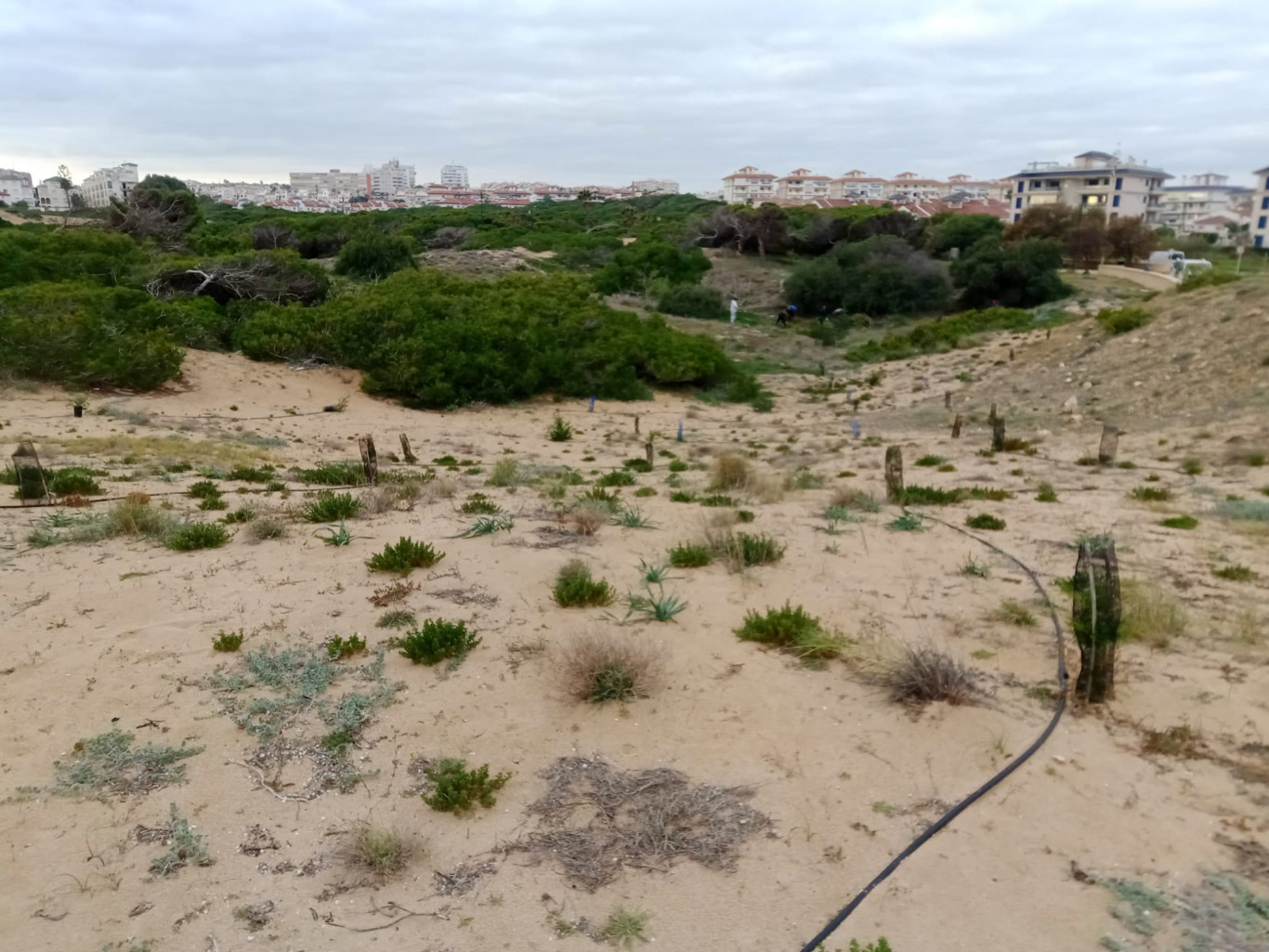The Municipal Natural Park Molino del Agua advances in the recovery of sainares and coastal threads

In this year 2022, the recovery work of the coastal juniper and juniper groves has been reinforced, an open forest adapted to the harsh conditions of the dunes and which is considered a habitat of community interest by the European Union. The objective of the action is to reinforce the recovery of the dune forests, a formation that has practically disappeared but of which there are references in the Middle Ages and in the Modern Age. In fact, both juniper and juniper were extinct in the south of the province of Alicante, with some specimens of the former remaining in the north of the province (around Benidorm, Jávea, Cabo de la Nao) as well as in the dehesa de El Saler, while the few specimens of juniper from the dunes were relegated to the Regional Park of Las Salinas y Arenales de San Pedro del Pinatar (Murcia). Specimens of mastic ( Pistacia lentiscus ) have also been introduced, a shrub that reaches large dimensions and which gives its name to “La Mata”. The plantations have been equipped with localized irrigation that will be withdrawn once the trees are settled.
The initiative continues with the work to diversify the dune vegetation started in 2016 and which has enabled the recovery of various species such as the cottony ( Otanthus maritimus ), the dune bell ( Calystegia soldanella ), the sea spurge (Euphorbia paralias ) and the sea carrot. ( Echinophora spinosa ). In addition, the aforementioned coastal junipers ( Juniperus macrocarpa ) and dune junipers ( Juniperus turbinata ).
The interventions have the support of the company NaturGreen through its initiative "local reforestation" and have the direction of the Department of Environment of the City of Torrevieja.
More information: Jorge Sánchez (ANSE) 646 011 469 Pedro López (617 413 325)
Photos: https://we.tl/t-LfCRsjiOur
The Municipal Natural Area Molino del Agua, with more than 17 hectares of surface, is part of the Network of Protected Natural Areas of the Valencian Community. The value of the place not only lies in the wonderful dunes that run through it, or the species of flora that develop in it, but also because it forms part of the coastal corridor that links important wetlands, such as the Salinas de Santa Pola and the Lagunas Torrevieja and La Mata, and be a link with the seabed protected by the European Union.
The rigorous conditions of the place are not an obstacle to be able to observe interesting species of insects, molluscs and reptiles as rare as the Iberian skink or the blind shingle. Birds are also very well represented, with pipits, larks, goldfinches, greenfinches and a large number of waders, which seek their food on the seashore, especially during the winter period; the increasingly rare Kentish Plover usually nests in this place. Common hedgehogs, squirrels, rabbits and various species of bats can also be found in the Molino del Agua Municipal Natural Park.